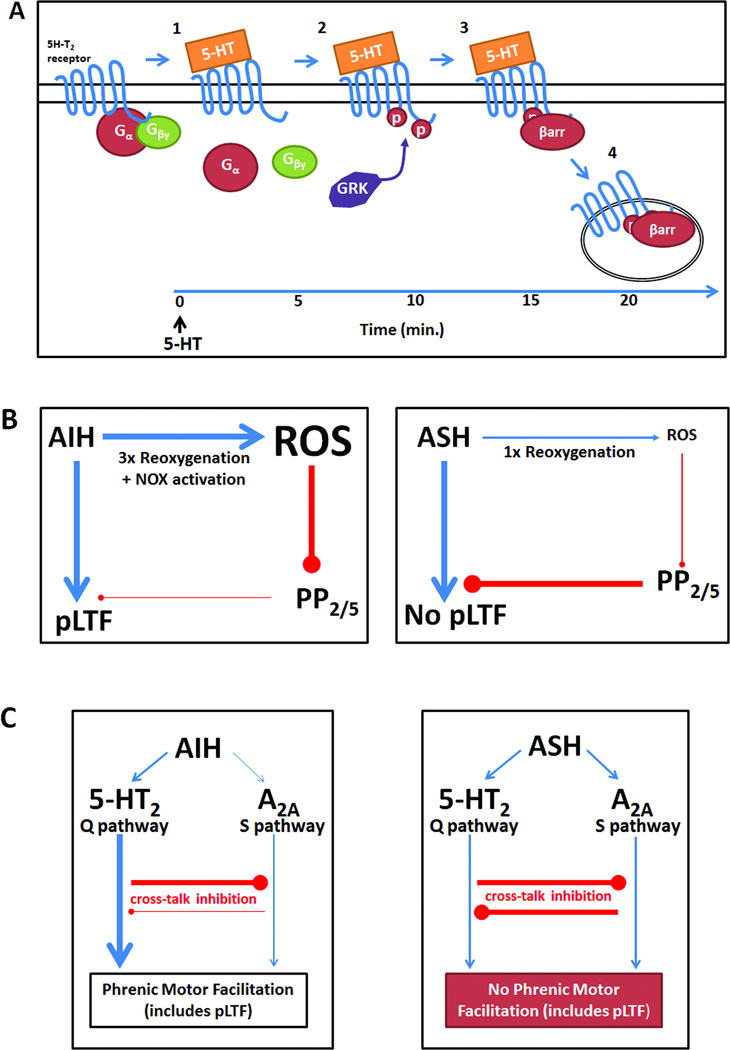Figure 3.
Possible mechanisms giving rise to pLTF pattern sensitivity. A: 5-HT2 receptor desensitization might occur with prolonged 5-HT release, such as during ASH: 1) 5-HT binds to its receptor, releasing Gα and Gβγ proteins, which activate downstream second messengers; 2) after prolonged agonist exposure (~10 min), 5-HT2 receptors are phosphorylated by G-protein coupled receptor kinase (GRK), preventing subsequent activation of G-proteins (ie. functional uncoupling) and promoting β-arrestin (βarr) binding to the 5-HT2 receptor; 3) β-arrestin binding prevents further 5-HT2 receptor activation while promoting receptor internalization; 4) receptors are internalized via a clathrin-dependent mechanism, decreasing the number of receptors available to elicit pLTF. B: Differential reactive oxygen species (ROS) formation during AIH vs. ASH may underlie pattern sensitivity. During AIH, ROS production during repeated reoxygenation events and NADPH oxidase (NOX) activation. Increased ROS would inhibit protein phosphatases 2 and 5, disinhibiting PKC (or other kinases) and enabling forward progression of pLTF. During ASH, insufficient ROS formation due to a single reoxygenation event may not inhibit the protein phosphatases sufficient to relieve their constraint to pLTF. C:Inhibitory interactions between the Q and S pathways to pMF may underlie pattern sensitivity of pLTF. 1) During AIH, the Q pathway is dominant because of 5-HT2 receptor activation with relatively little adenosine accumulation. 2) During ASH, greater adenosine release/accumulation may cause sufficient S pathway activation to offset Q pathway activation. Balanced activation of both pathways may prevent any pLTF expression due to balanced cross-talk inhibition.

